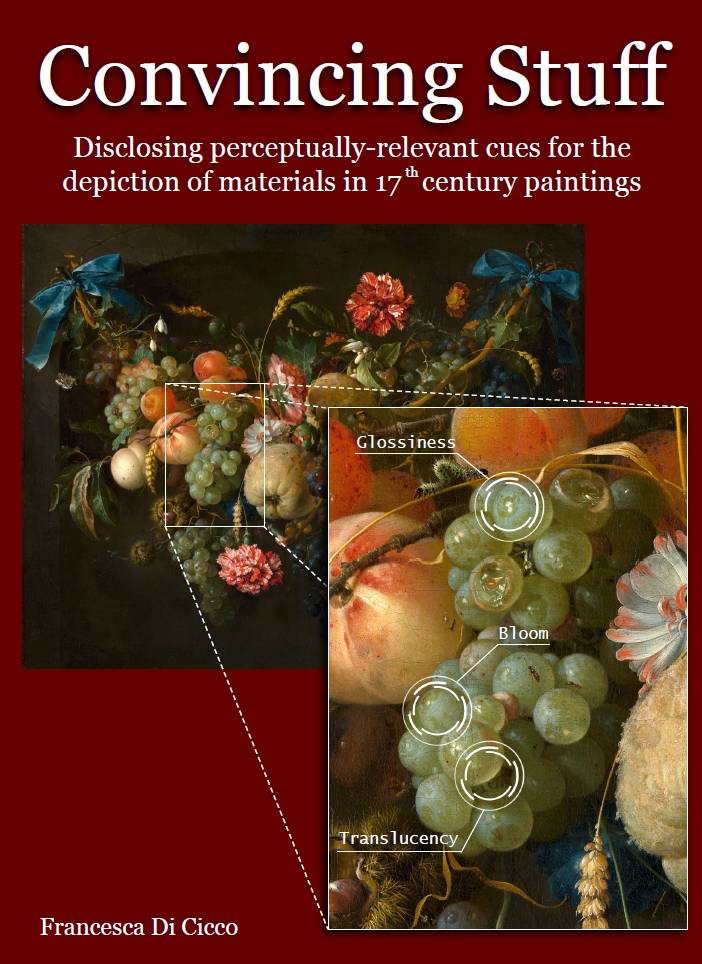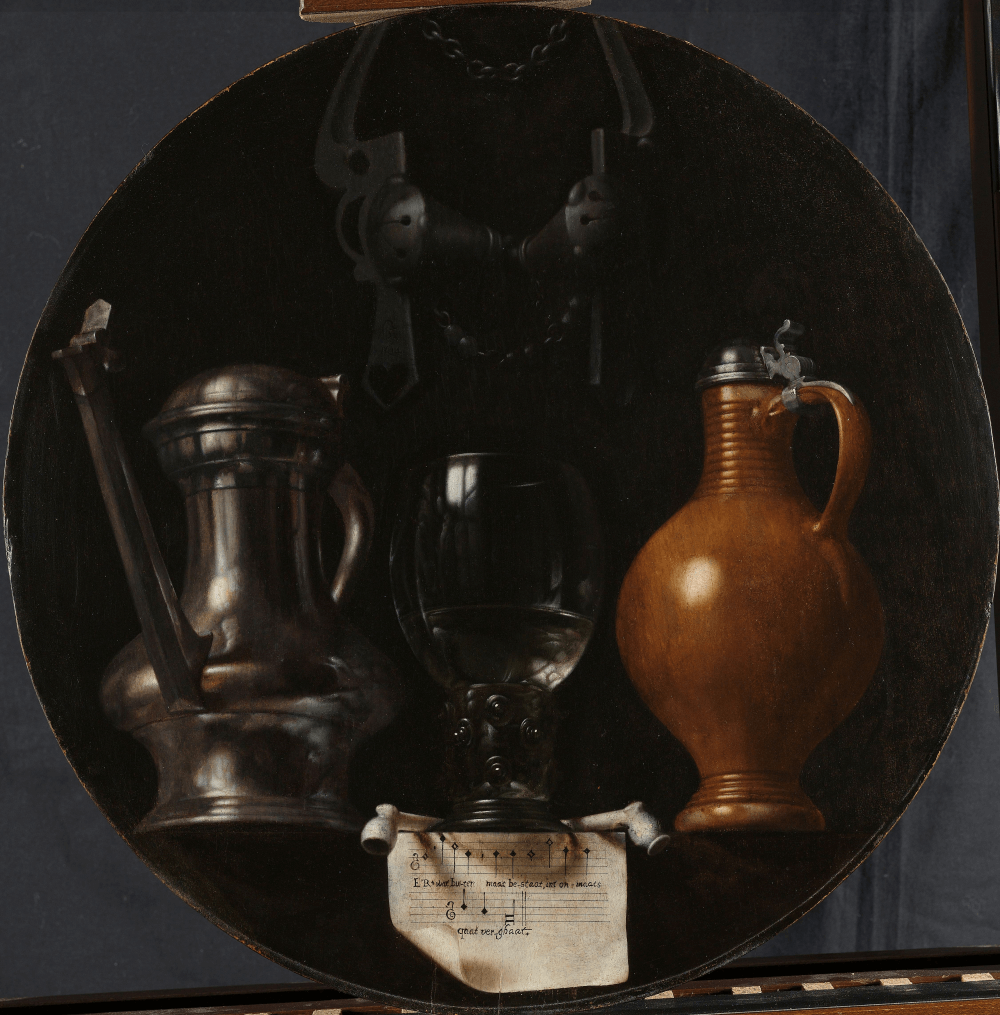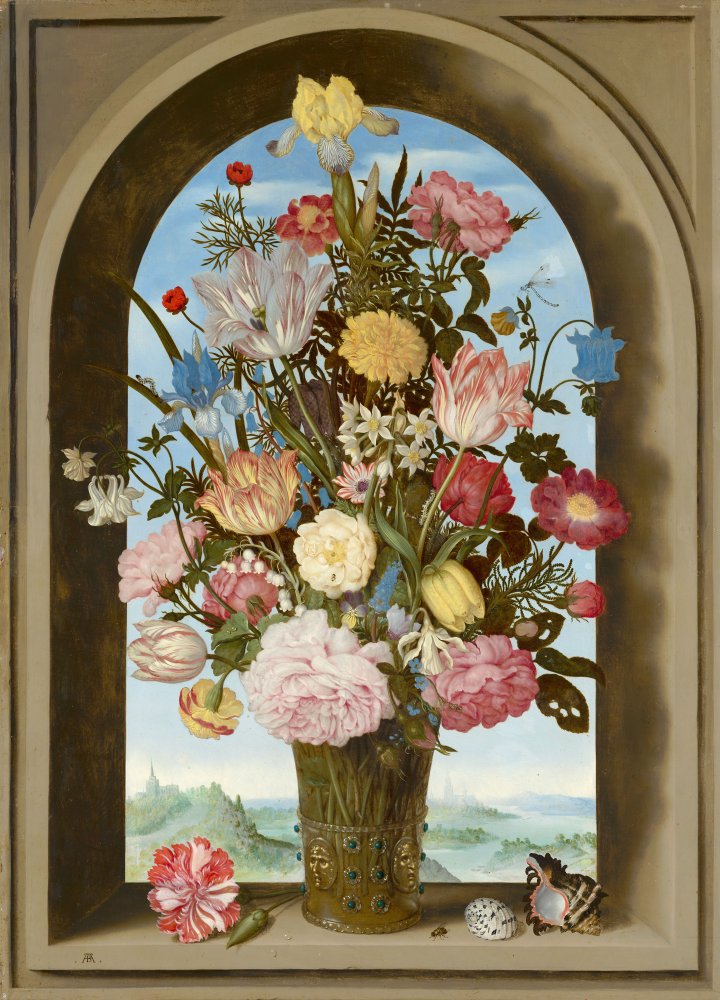How to paint convincing stuff
If you see a bunch of grapes, how does your brain understand that those are real grapes and not ones made of plastic? And if you see those grapes in a painting - say a 17th-century piece of Dutch Golden Age art - how does your brain understand that those are also grapes? That’s what Francesca Di Cicco wanted to know for her PhD thesis.
A guide for masters
Di Cicco, originally from Italy, studied chemistry in Rome before moving to Utrecht to study nanomaterials. In 2016, she began her PhD research at the Faculty of Industrial Design Engineering at TU Delft, on a project supported by The Netherlands Institute for Conservation+Art+Science+ (NICAS). Together with researchers at the Faculty of Mechanical Engineering, Utrecht University, and the Rijksmuseum and Mauritshuis, Di Cicco set out to determine just how famous Dutch artists, like Vermeer, Rembrandt, and Frans Hal, created such lifelike versions of everything from grapes to silk and how our brains understand those objects.
Grapes, a common object included in still life paintings, featured prominently in “The Big World Painted Small,” a painting guide written by Dutch painter Willem Beurs in 1692. The book explains, in very specific detail, how to properly paint objects so they look realistic. According to Beurs, grapes are especially challenging to paint, so if you can master them, you can easily paint other edibles, like berries and citrus fruits.
Much ado about grapes
The book served as a jumping-off point for Di Cicco to investigate both how the human brain perceives the material properties of matter and also how artists render those properties onto the canvas.
Once she settled on which materials she wanted to investigate, she turned her attention to finding works of art that contained those objects. “It was a lot of searching on the internet,” she said. A fellow PhD student was working simultaneously on a project to make a database of paintings but that was not completed when Di Cicco started. “It would have been a lot easier if it was,” she says.
Instead, she scoured the website of art museums, like the Rijksmuseum, the Mauritshuis, and the Metropolitan Museum of Art in New York, which also has a large collection of 17th century Dutch masters. Di Cicco had to find more than just paintings with grapes, she also needed high-resolution images of the paintings to conduct her research.
Di Cicco used a variety of research methods to understand these questions. She took Beurs’ instructions for how to paint grapes and recreated them digitally. She then asked people how accurate the grapes appeared. “It turns out,” she says, “There’s a lot going on with grapes.”
She calculated the exact properties of certain features of an image, like the highlight on a grape, and adjusted it to see how that changed the perception of the fruit. She also had people look at images of paintings and rate them on a variety of scales, like “glossiness” or “juiciness” of a piece of fruit. She then fed that information into a computer algorithm to predict the human perception of material properties.
She also looked at other materials, like velvet or satin, and asked people how “heavy” or “soft,” they thought they looked and examined what the differences were in the images. She even had a fellow PhD student paint a still life in the lab, recorded the process, and then digitally removed or added layers of paint to see what impact that had on the perception of the objects.
Less is more
She says that despite Italy’s long and famous artistic traditions, from the likes of Michelangelo and da Vinci, her research would not be possible in her homeland. “Dutch painters from this era were so good in rendering materials in a realistic manner, whereas Italians were more concerned with the rendering of geometry and space,” she says.
According to Di Cicco’s research, less is more. The pearl in Johannes Vermeer’s famous work, The Girl with the Pearl Earring, is made up of only a few brush strokes. “Doing too much can actually make things look less realistic,” says Di Cicco. Her work is important for anyone trying to render realistic-looking images, from product designers mocking up a potential product to video game makers who are creating entire worlds.
Di Cicco wasn’t a big art buff herself before starting her PhD. “I liked to go to museums, but I wasn’t all that into it,” she says. Her research changed all of that. “I have definitely started to look at paintings in different ways.”





